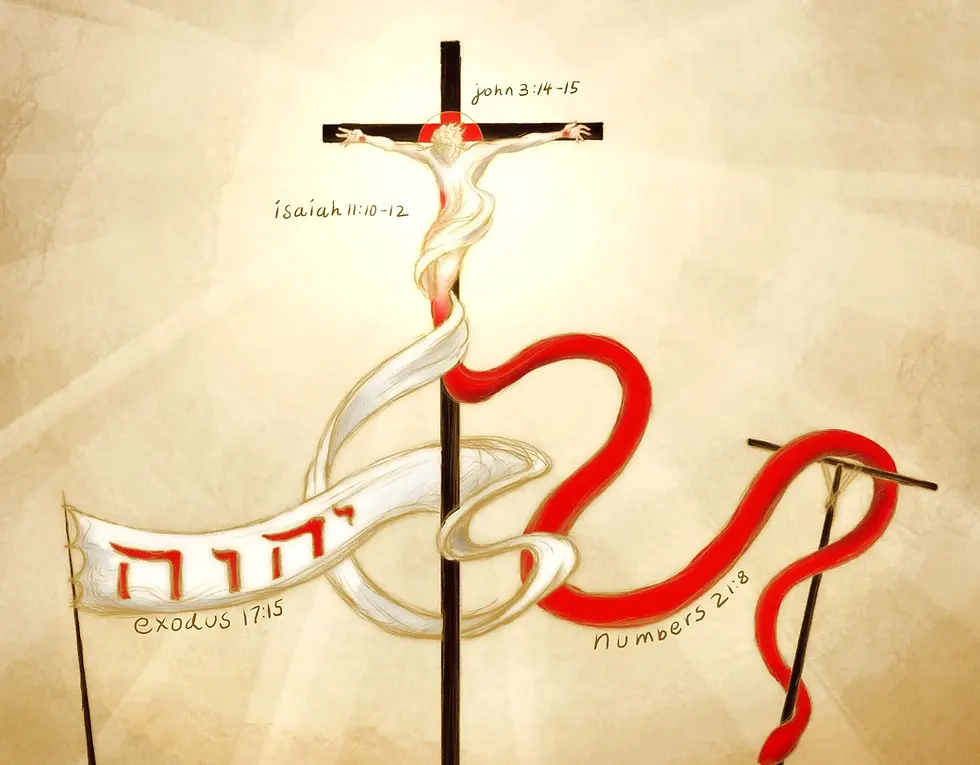THREE SENSES & THE TRANSFIGURATION
- Charles
- 4 mars 2023
- 4 min de lecture
Reflections for the Second Sunday of Lent: Genesis 12:1-4a, 2 Tim 1:8b-10, & Matthew 17:1-9
The transfiguration episode is quite literally a feast for the senses. Today’s gospel describes how three different senses enabled Peter, James, and John to enter into this marvellous mystery that unfolded before them.

Let us engage the way of these three senses to personalise the mystical experience of transfiguration in our own discipleship.
1. See: The Bible reminds us on several occasions that no one has seen God (John 1:18, 1 Timothy 6:16, 1 John 4:12) for His glory is too marvellous to be perceived by the human senses. Even the two Old Testament figures who appear in the Gospel today have not seen God: Moses could only see the ‘back’ of God (Exodus 33:20) and Elijah covered his face with his cloak when he met the Lord (1 Kings 19:13). Those who ‘see God’ fear death (Genesis 32:30, Isaiah 6:5). This ‘fear-invoking’ glory of God becomes ‘visible’ to the disciples during the transfiguration. They see the face of Jesus shine like the sun and his clothes become white as light. Their eyes are presented with a glimpse of the ‘unseeable’ divine glory for Jesus became the visible face of the invisible God (Colossians 1:15).
Where can we see the face of Jesus today? Every time the eucharistic elements of bread and wine are transfigured into the body and blood of Christ, we are provided with the unique opportunity to see the face of God (John 6:51, 12:45). Every time we care to look deeply into the face of a neighbour who is hungry, thirsty, naked, sick, a stranger or a prisoner (Matthew 25:35-36), we can recognise the face of Jesus. When we realise that we are all created in God’s own image and likeness, the image that stares at us when we look into the mirror transfigures into the face of Jesus (Genesis 1:27). When justice, peace, and fraternity become a part of our social reality, we regain the unique privilege of seeing God face to face (Revelations 22:4).
2. Listen: Jesus and the apostles are not alone on the mountain of the transfiguration. Moses and Elijah are seen “conversing” with Jesus. Why Moses and Elijah? The law was given through Moses (John 1:17) and Elijah is understandably the greatest of the prophets who was expected to return before the end times (Malachi 4:5-6). Therefore together, Moses and Elijah represent “the law and the prophets”, the two main divisions of the Hebrew Scriptures (Tanakh): The Law, Torah, or Pentateuch comprising the five books of Moses and The Prophets (Neviim), which included the Wisdom literature and psalms (Ketouvim). When the disciples raised their eyes, they saw no one else but Jesus alone. This has traditionally been interpreted to mean that Jesus now becomes the living Torah, the fulfilment of the law and the prophets.

Jesus is the Eternal Word of God addressed to all creation. God who had spoken to our ancestors in many and various ways by the prophets, has spoken, in these last days, through His Son (Hebrew 1:1). What should be our response? The voice from the cloud clarifies, “listen to him”. Here is the Gospel’s challenge to the ‘hegemony of screens’ that seems to characterise our contemporary today. Screens of mobiles, tablets, computers, televisions, and movie theatres have redefined the way we work, relax, and communicate. God calls for a transfiguration from this oppressive culture of screens, images and videos to the liberating culture of active ‘listening’ to the living Torah addressed to us in our daily lives.
3. Be touched: Mixed emotions overtake the apostles during the transfiguration. They are evidently captivated by a sense of awe and wonder. Peter does not want to leave and therefore proposes to build three tents. While at the same time, when the disciples hear the voice from the cloud, they fall prostrate in fear. How does Jesus respond to these two varied emotions? He touches them! Jesus’ touch effectuates two immediate responses in the disciples: firstly they overcome fear and gather the courage to rise their eyes. Secondly, the touch of Jesus motivates them to move on. They rise and come down the mountain to accompany their master on his journey to his passion, death, and resurrection.

Transfiguration is not about isolating oneself on a mountain or building a tent to enjoy the bliss of the vision of divinity. It is meant to empower the disciples to walk the path from Mount Tabor/Hermon to Mount Calvary. Moses and Elijah spoke about the ‘exodus’ of ‘the beloved Son’ that was to be accomplished in Jerusalem (Luke 9:31). The touch of Jesus nudges the disciples from the ‘stagnancy’ of Peter’s proposed tent to the ’dynamism’ of their collective journey to Calvary. This Sunday, let us engage our senses in our reflection of the transfiguration: let us ‘see’ the face of Jesus, listen to his transformative Word, and overcome fear to continue on our collective way of the cross.




Commentaires